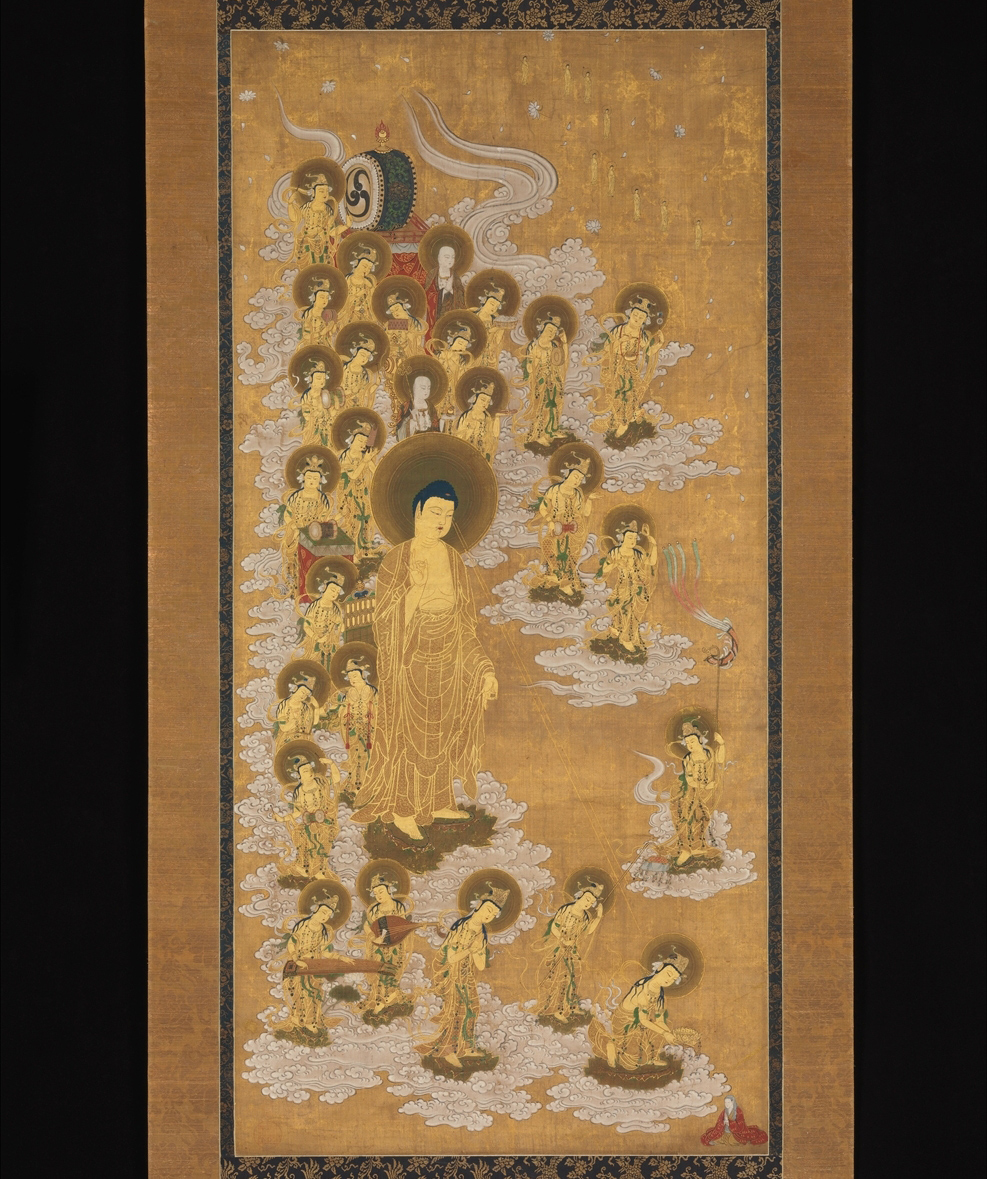Who is Amida Buddha?

Amida Buddha (center), surrounded by bodhisattvas, welcomes a dying Pure Land practitioner (bottom right) into his Pure Land in this Japanese raigozu (“descent pictures”) scroll. | The Metropolitan Museum of Art, Bequest of Lettice Sands Phelps Stokes, 1988.
Within the tradition of Mahayana Buddhism, the Pure Land schools of East Asia take as their guiding focus Amitabha Buddha, whose name means “immeasurable light.” The light of this buddha shines everywhere, unlimited by conditions. (The name Amida is an abbreviation of Amitabha and is the usual form used in Japan.)
Like the bodhisattva Manjushri, Amida is associated with wisdom, but where Manjushri’s wisdom is sharp and penetrating, Amida’s is gentle and all-accepting. It is this all-embracing quality that has made Amida a favorite buddha in much of East Asia. Pure Land Buddhism starts from a humble appreciation of the human condition—a recognition that all human beings are fallible and prone to error. Rather than expecting us to overcome our weaknesses, Amida Buddha accepts us just as we are.
In the Larger Pure Land Sutra, one of the Pure Land school’s central texts, Shakyamuni tells his disciple Ananda the story of Amida Buddha: how, long ago, a young man began his spiritual quest by going to see the buddha of that era, Lokeshvararaja. The young man, Dharmakara, is so overwhelmed by meeting Lokeshvara that he is inspired to make 48 great vows, and he perfects them through many rebirths to become Amida Buddha. The most important of these vows is the promise to receive in his Pure Land all those who simply turn their minds toward him and calls his name.

Tricycle is more than a magazine
Gain access to the best in sprititual film, our growing collection of e-books, and monthly talks, plus our 25-year archive
Subscribe now